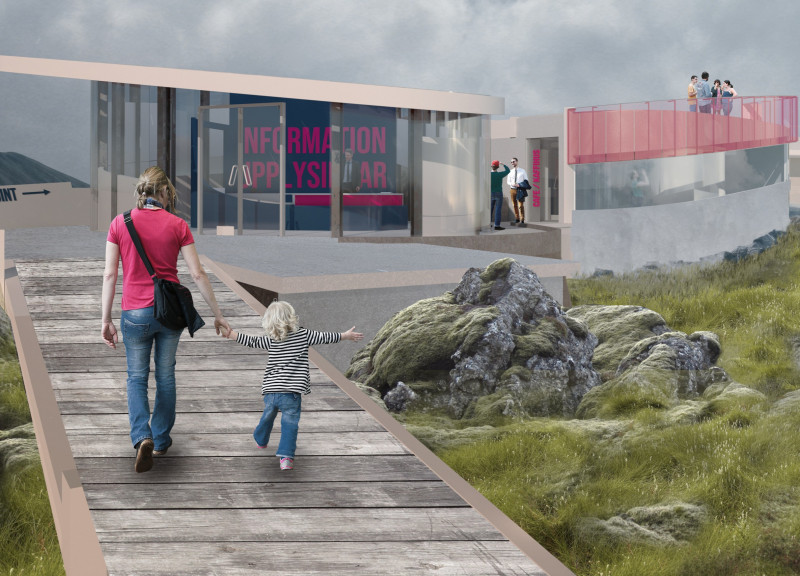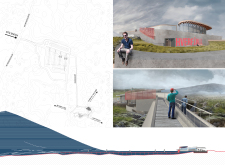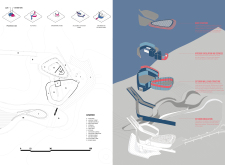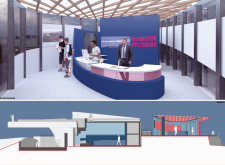5 key facts about this project
The Dimmuborgir Visitor Center is situated in Iceland, known for its unique geological features and volcanic history. The center enhances visitor engagement with the landscape, serving as a space for education and a connection to the natural environment. The design concept draws inspiration from the characteristics of the site, particularly the forms of Hverfjall volcano and the fissures in the nearby lava fields, allowing visitors to appreciate the region's geography deeply.
Architectural Concept
The visitor center includes two distinct buildings: an exhibition space that informs visitors about the area's geological history and a café for relaxation. The center's layout features a promenade leading visitors to various destinations, encouraging an explorative attitude toward the surrounding landscape.
Accessibility and Interaction
Accessibility is an important aspect of the design, implemented through boardwalks, sloped paths, and ramps that navigate the rugged terrain. This thoughtful approach enhances movement around the site while inviting visitors to engage with the natural features from different angles.
Structural Design and Materiality
The roofs of the buildings are designed to reflect the geological context. One building presents an open and inviting form, while the other appears more solid, echoing the heavier geological elements found in the area. Materials are chosen to reflect local characteristics, with the roofs designed to resemble larger lava flows and incorporating silica composite materials sourced from the lava itself. This choice strengthens the connection between the architecture and its setting.
Visitor Experience and Narrative
Interior circulation in the visitor center is focused on enhancing the visitor experience, drawing inspiration from volcanic chambers and the flow of magma. This narrative encourages connection with the landscape's geological history. The exterior pathways play a crucial role, linking trails that guide visitors toward Hverfjall, creating a cohesive relationship between the built environment and the natural surroundings.
A ramp integrates with the café, providing access to a rooftop observation area. This design feature offers visitors expansive views of the surrounding terrain and invites them to take a moment to appreciate the volcanic landscape.






















































